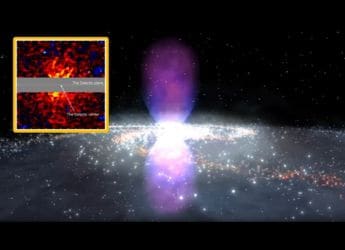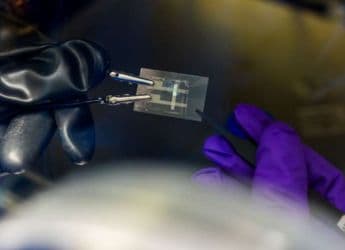Microsoft Introduces MAI-Image-1, Its First Natively Developed Image Generation AI Model
Microsoft said the MAI-Image-1 AI model will soon be available in Copilot and Bing Image Creator.

Photo Credit: Microsoft
Microsoft did not share any technical details of the AI model
Microsoft introduced the MAI-Image-1 artificial intelligence (AI) model on Monday. It is the company's first natively built image generation model. The Redmond-based tech giant highlighted that the AI model made its debut on the public model ranking forum LMArena and was listed among the top 10 text-to-image models. It is currently not available anywhere else, but will soon be added to Microsoft's products. The model arrives just a little over a month after Microsoft introduced its first in-house voice model, MAI-Voice-1.
Microsoft Develops Its First AI Image Generation Model
Ever since the start of 2025, Microsoft has started developing in-house generative AI models. Separate from the Azure-developed models for its enterprise clients, these are labelled Microsoft AI or MAI in short. In July, the company introduced the MAI Diagnostic Orchestrator (MAI-DxO), an AI model that is said to diagnose patients more accurately than human doctors, and in August, it debuted the MAI-Voice-1, a speech generation model that natively generates expressive and natural-sounding voice.
In a newsroom post, the tech giant announced the MAI-Image-1. Taking a shift from AI players who are developing large general-purpose models, Microsoft said its focus is on creating “purpose-built models” that “pave the way for more immersive, creative, and dynamic experiences inside our products.”
Currently, the only place to experience the model's capabilities is LMArena, where the AI model debuted in 9th position on the text-to-image leaderboard. However, it is a preliminary ranking based on pre-release testing, and the final ranking can be different based on the community prompts and votes. At present, Google's Nano Banana, Imagen 4, and GPT-image-1 are all ranked above the Microsoft model. The tech giant confirmed that the model will be added to Copilot and Bing Image Creator soon.
While Microsoft did not share any technical details of the image generation model, it highlighted that rigorous data selection and nuanced evaluation focused on tasks that mirror real-world use cases were prioritised during the training. The company also took feedback from professionals in creative industries.
As per the company, the model excels at generating photorealistic imagery, such as lighting, landscapes, and more. It is also said to generate output more quickly compared to many “larger, slower models.”
Get your daily dose of tech news, reviews, and insights, in under 80 characters on Gadgets 360 Turbo. Connect with fellow tech lovers on our Forum. Follow us on X, Facebook, WhatsApp, Threads and Google News for instant updates. Catch all the action on our YouTube channel.
Related Stories
- Samsung Galaxy Unpacked 2025
- ChatGPT
- Redmi Note 14 Pro+
- iPhone 16
- Apple Vision Pro
- Oneplus 12
- OnePlus Nord CE 3 Lite 5G
- iPhone 13
- Xiaomi 14 Pro
- Oppo Find N3
- Tecno Spark Go (2023)
- Realme V30
- Best Phones Under 25000
- Samsung Galaxy S24 Series
- Cryptocurrency
- iQoo 12
- Samsung Galaxy S24 Ultra
- Giottus
- Samsung Galaxy Z Flip 5
- Apple 'Scary Fast'
- Housefull 5
- GoPro Hero 12 Black Review
- Invincible Season 2
- JioGlass
- HD Ready TV
- Laptop Under 50000
- Smartwatch Under 10000
- Latest Mobile Phones
- Compare Phones
- Poco F8 Ultra
- Poco F8 Pro
- Huawei Mate 80 RS Master Edition
- Huawei Mate 80 Pro Max
- Huawei Mate 80 Pro
- Huawei Mate 80
- Huawei Mate X7
- Honor 500
- Asus ProArt P16
- MacBook Pro 14-inch (M5, 2025)
- Poco Pad M1
- Poco Pad X1
- Honor Watch X5
- Huawei Watch Ultimate 2
- Acerpure Nitro Z Series 100-inch QLED TV
- Samsung 43 Inch LED Ultra HD (4K) Smart TV (UA43UE81AFULXL)
- Asus ROG Ally
- Nintendo Switch Lite
- Haier 1.6 Ton 5 Star Inverter Split AC (HSU19G-MZAID5BN-INV)
- Haier 1.6 Ton 5 Star Inverter Split AC (HSU19G-MZAIM5BN-INV)

















